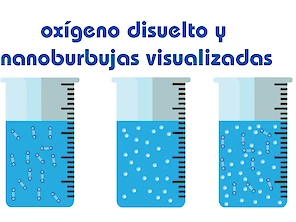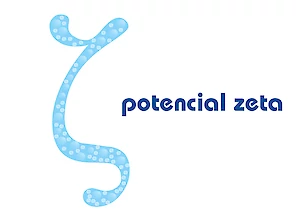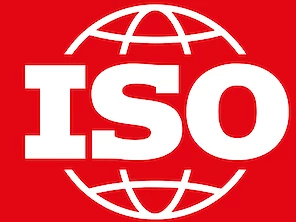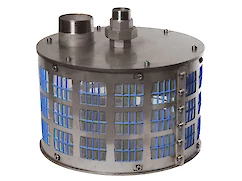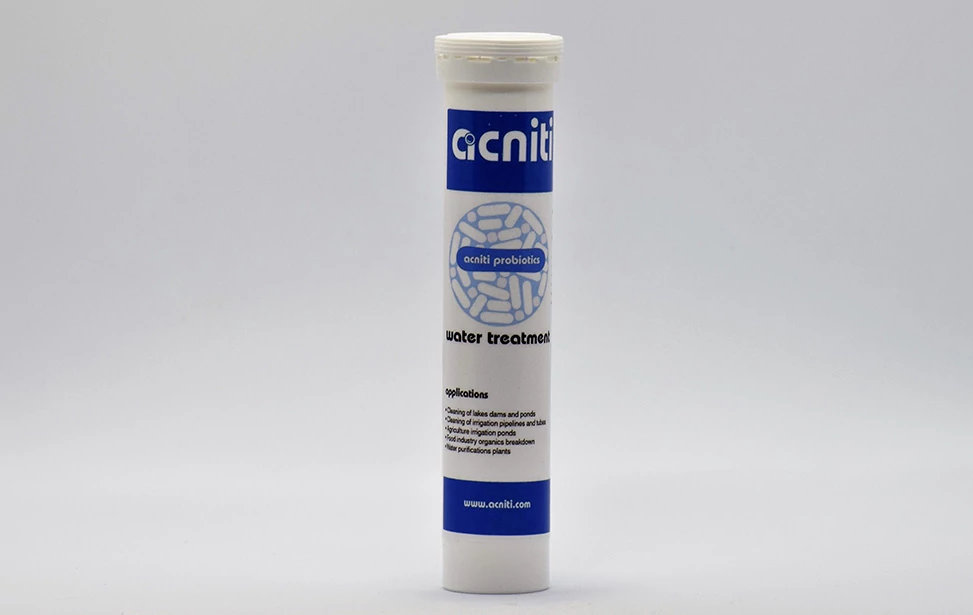¿Qué son los probióticos para el tratamiento del agua?
Introduction
Acniti recognize that the efficiency and effectiveness of water treatment could be improved by increasing the number of bacteria that contributes to the wastewater treatment process. Probiotic bacteria are dependent on dissolved oxygen in water to live and the higher the dissolved oxygen content the more efficient they work. For this reason, it's important to combine the water treatment process with nano bubbles to provide a healthy environment for a top performance of the water treatment bacteria.
Pond remediation
Algae blooms are often a reason to start pond remediation, as a typical phenomenon of the marine ecological environment. Algae blooms have a complex relationship with the meteorological, hydro-logical, marine biological and chemical conditions of a pond. Once an algae bloom has been established in a pool the dissolved gasses are in disorder. Algae cause an increase in pH in water due to the consumption of CO2. During the night algae consume more Oxygen than what is produced during daytime the photosynthetic period. When you measure the DO content in a pond or lake it's important to do this just before sunrise the DO levels are at that time the lowest. As soon as the sun rises photosynthetic activity starts and oxygen levels increase.
Wastewater treatment
As urban populations grow and capital investments in new infrastructure fail to keep pace, many wastewater treatment plants are overloaded. Increased waste volumes and greater waste complexity have left many plants unable to meet today’s tougher effluent requirements. This can result in penalties, fines and surcharges for facility operators and the release of badly treated wastewater into the environment.
In general, industrial wastewater has a high content of organic matter, the levels are often so high that treatment is required. Bio-remediation is done by selecting specific micro-organisms to grow on pollutants to reduce the level of these pollutants. During the bio-remediation process, enzymes produced by micro-organisms modify the structure of toxic pollutants into less complex structures so that it become harmless metabolites. Due to the high amount of organic content in the water, the gas content in the water is in disorder making biologic remediation difficult. To re-establish life in the water, aeration is important.
Nanobubbles to restore the gas content
The disorder of dissolved gasses such as oxygen, carbon dioxide, nitrogen, oxides of nitrogen and oxides of sulfur has a significant effect on the quality of water. Ultrafine bubbles help to restore the gas disorder in a pond or wastewater treatment plant. Probiotics, the good bacteria aid restoring the nutrient balance in water. The effective bacteria can only work efficiently when there is no disorder in the gas content and sufficient dissolved oxygen is available for their metabolism.
¿Cómo funcionan los probióticos para el tratamiento del agua con acniti?
Las bacterias pueden absorber nutrientes más rápido y crecer más rápidamente que las algas y las malas hierbas acuáticas. Las bacterias superan a las algas y las malas hierbas por el alimento disponible. Los subproductos de este proceso natural de limpieza del agua son agua, dióxido de carbono y biomasa bacteriana. La biomasa bacteriana es rica en proteínas. En un estanque con peces o invertebrados como caracoles o cangrejos de río hay muy poca acumulación de bacterias, porque los animales comen la biomasa microbiana. El fósforo, que es la causa principal de las cantidades excesivas de algas y malas hierbas acuáticas, se canaliza hacia la red alimentaria de la fauna y, por lo tanto, está menos disponible para las algas. Los probióticos pueden crecer más rápido que los patógenos dejando poco espacio de nicho disponible para las cepas indeseables. Esto se llama exclusión competitiva.
Capaz de tratar
Todos los productos contienen organismos naturales y seguros. Las diversas aplicaciones son:
- Uso doméstico (séptico, líneas de agua)
- Aguas residuales domésticas e industriales
- Uso industrial DBO y DQO reducidos
- Tuberías de riego agricultura
- Aguas residuales (horticultura)
- Hidroponía (horticultura)
- Canales de ríos y estanques (contra el crecimiento de algas)
- Camaroneras y piscigranjas
- Envío sanitario
- Plantas potabilizadoras de agua
- Industria alimentaria / Instalaciones de procesamiento de alimentos
- Lagunas aeróbicas y facultativas
- Arranque y recuperación del sistema
- Descompone pesticidas y productos químicos
- Restauración de ríos, lagos y estanques
La línea exclusiva de tabletas de alta concentración es fácil de manejar y amigable con el medio ambiente.
Beneficios
- Improves effluent water quality: lowers BOD and COD
- Improves clarity and settling of solids
- Digests hydrocarbons, pesticides, herbicides and fungicides
- Reduces sludge production and helps prevent bulking
- Improves WWTP stability and hot and cold weather performance
- Reduces odors
- Reduces or eliminates fines and surcharges
- Accelerates system startup and recovery
